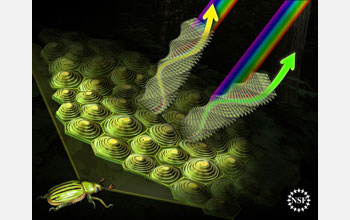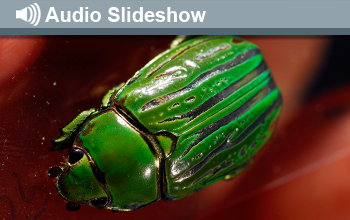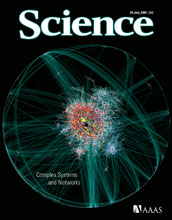All Images
News Release 09-141
What Scientists Know About Jewel Beetle Shimmer
Iridescent green beetles could provide blueprint for light-reflecting materials
This material is available primarily for archival purposes. Telephone numbers or other contact information may be out of date; please see current contact information at media contacts.

Research suggests jewel beetle cells come from spontaneous arrangement of glucose-like particles called chitin molecules that form as cones. When these cones solidify, they preserve their structures and produce different colors as light hits them from different angles.
Credit: Zina Deretsky, National Science Foundation
Download the high-resolution JPG version of the image. (740 KB)
Use your mouse to right-click (Mac users may need to Ctrl-click) the link above and choose the option that will save the file or target to your computer.

Look inside a beetle's shell in this audio slideshow, to see the secrets of its shimmer. To start the slideshow, click on the screen or on the play arrow in the lower left. Alternatively, you can navigate with the arrow keys or view the whole set of pictures at once using the buttons in the lower right.
Credit: Lisa Raffensperger, National Science Foundation

Scientists at the Georgia Institute of Technology in Atlanta recently discovered jewel beetles, Chrysina gloriosa, change color because of the light-reflecting properties of the cells that make up their external skeletons, not because of unique, light-absorbing properties in their pigment.
Credit: Georgia Tech, Gary W. Meek
Download the high-resolution JPG version of the image. (1 MB)
Use your mouse to right-click (Mac users may need to Ctrl-click) the link above and choose the option that will save the file or target to your computer.

The researchers' findings appear in the July 24, 2009, issue of Science magazine.
Credit: Copyright 2009 AAAS
Download the high-resolution JPG version of the image. (1.1 MB)
Use your mouse to right-click (Mac users may need to Ctrl-click) the link above and choose the option that will save the file or target to your computer.
